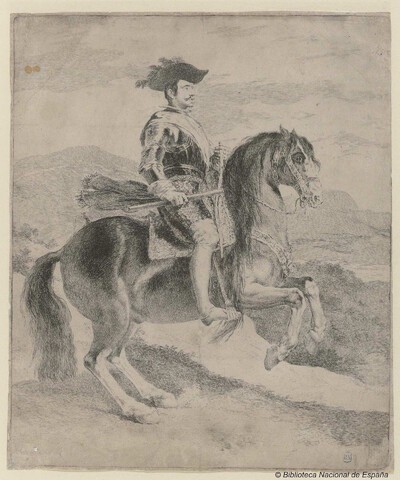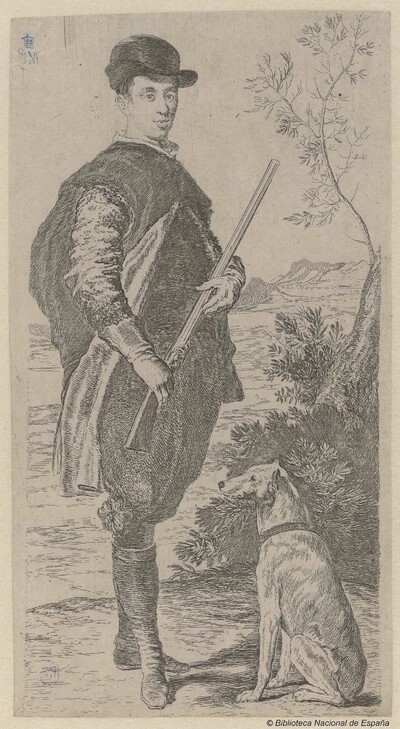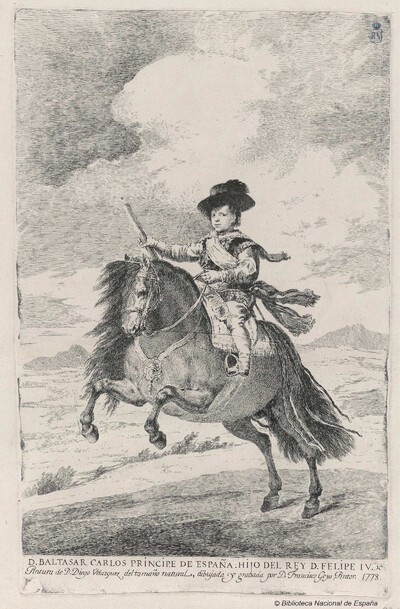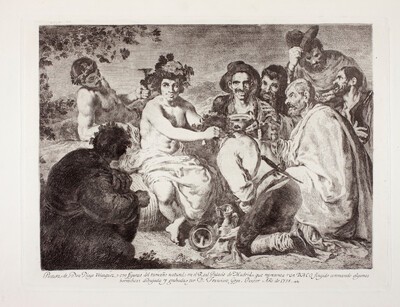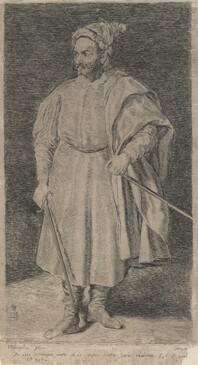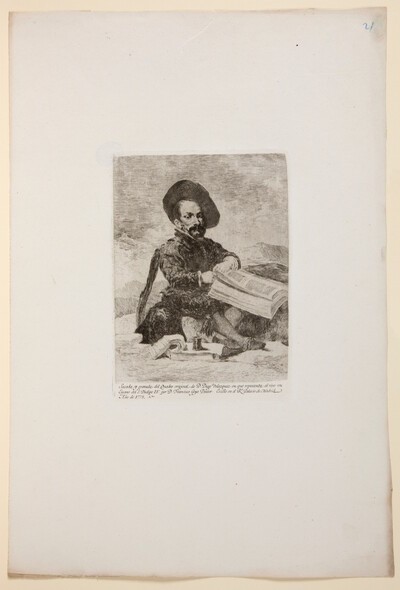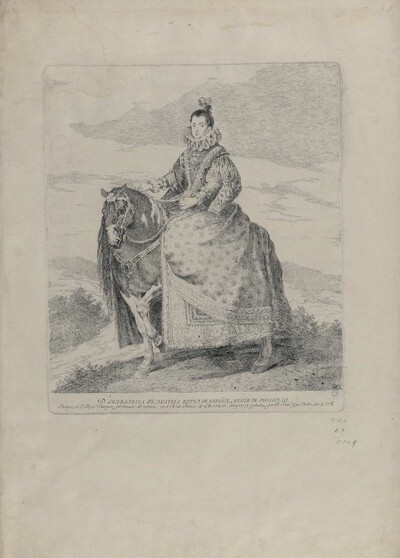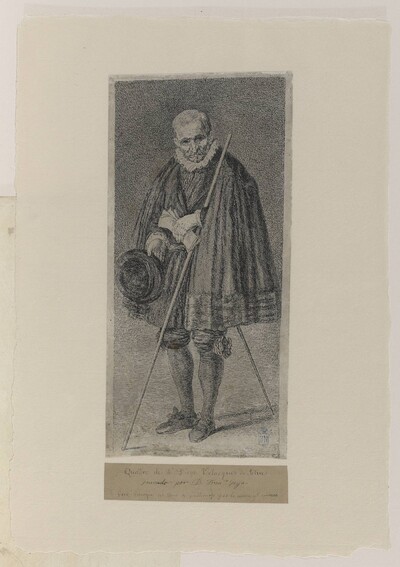- Cronología
- 1778
- Dimensiones
- 370 x 310 mm
- Técnica y soporte
- Etching
- Reconocimiento de la autoría de Goya
- Undisputed work
- Ficha: realización/revisión
- 10 Nov 2010 / 27 Oct 2022
- Inventario
- 225
Pintura de D. Diego de Velazquez, del tamaño del natural, en el R.l Palacio de Madrid; dibujada y grabada por D. Fran.co Goya, Pintor, año de 1778. ("Painting by Don Diego Velázquez, life size, in the Royal Palace of Madrid; drawn and etched by Don Francisco Goya, Painter, in the year 1778" at the bottom of the etching).
See Philip III.
Three different editions of this etching exist: the first made in black ink; the second in greyish-sepia ink; and the third in dark greyish-brown ink. Handwritten on this third-edition print, in the lower right-hand corner, we see the word Merelo.
The work was announced in the Gazeta de Madrid of the 28th July 1778.
Velázquez's Portrait of the Count-Duke of Olivares may have been painted between 1632 and 1633, after his first trip to Italy (Prado Museum, Madrid). In that work we see Don Gaspar de Guzmán, son of the second Count of Olivares, ambassador in Rome during the reign of Philip II, astride a prancing horse. The animal is turned towards the background, where we see a battle taking place, which Philip IV's royal favourite, his raised hand brandishing a baton, seems eager to join. This gesture, along with the purposeful expression on his face, present a clear, intentional contrast with the passive mood of the equestrian portrait of Philip IV.
Goya employs a similar working method for this image as the one used in the portrait of Philip IV, i.e., applying regular lines to build up the body of the horse and the armour worn by its rider. Both figures stand out boldly against the background, which Goya has rendered more faithfully here than in some of the other copies. It is likely that he was aware of the importance of the scenery, both in the correct interpretation of this work by Velázquez and in the characterization of the figure.
The etching plate is conserved in the National Chalcography Museum (cat. 162). It came from the Fondo de Recuperación of 1948 (body created to recover works of art taken out of Spain during the Civil War).
-
Goya und Velazquez: das königliche Portrait,Städtische Galerie im Städelschen KunstinstitutFrankfurt1991cat. 3
-
Francisco Goya. Sein leben im spiegel der graphik. Fuendetodos 1746-1828 Bordeaux. 1746-1996Galerie KornfeldBern1996from November 21st 1996 to January 1997cat. 3
-
Goya, grabadorMadridBlass S.A.1918cat. 12
-
Goya engravings and lithographs, vol. I y II.OxfordBruno Cassirer1964cat. 10
-
Vie et ouvre de Francisco de GoyaParísOffice du livre1970cat. 95
-
Catálogo de las estampas de Goya en la Biblioteca NacionalMadridMinisterio de Educación y Cultura, Biblioteca Nacional1996cat. 19
-
Goya. In the Norton Simon MuseumPasadenaNorton Simon Museum2016p. 31

